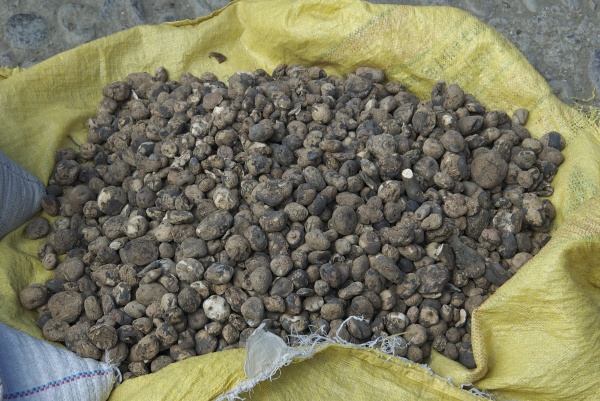Facts About Chuño
Chuño is a distinctive freeze-dried potato product traditionally crafted by the Quechua and Aymara communities of Bolivia and Peru. This unique process uses a specific type of bitter, frost-resistant potato, which is subjected to the region's cold nighttime temperatures and intense daytime sunlight. The term "chuño" originates from the Quechua language, meaning "frozen potato."
The history of chuño dates back to periods preceding the Inca Empire, with archaeological evidence found at ancient sites like Tiwanaku. Spanish chronicler José de Acosta documented chuño in 1590, highlighting its portability and nutritional benefits.
Chuño production occurs during the winter months when temperatures fall below freezing. The process begins by selecting small potatoes, which are then frozen and dehydrated over three nights. This natural freeze-drying method is followed by trampling the potatoes to remove water and skins. The resulting product comes in two varieties: white chuño, which is washed and sun-dried, and black chuño, which is sun-dried without washing. When properly dried and stored, chuño can last for decades.
There are numerous ways to enjoy chuño, ranging from desserts to hearty soups like chairo, a traditional Bolivian dish. Chuño flour is a key ingredient in Peruvian cuisine, offering a distinct flavor that differentiates it from regular potatoes in recipes. In certain regions of Bolivia and Peru, chuño is a dietary staple, featured in dishes such as jakonta soup and served with various sauces.

 Uruguay
Uruguay